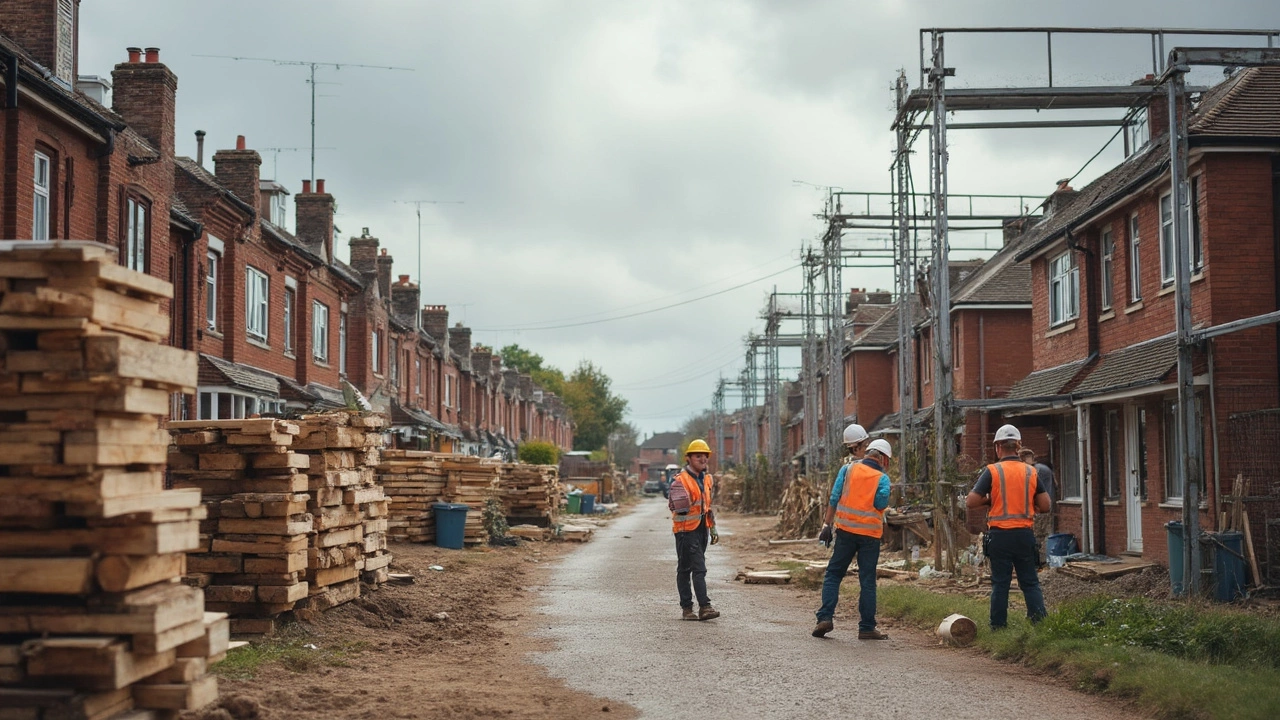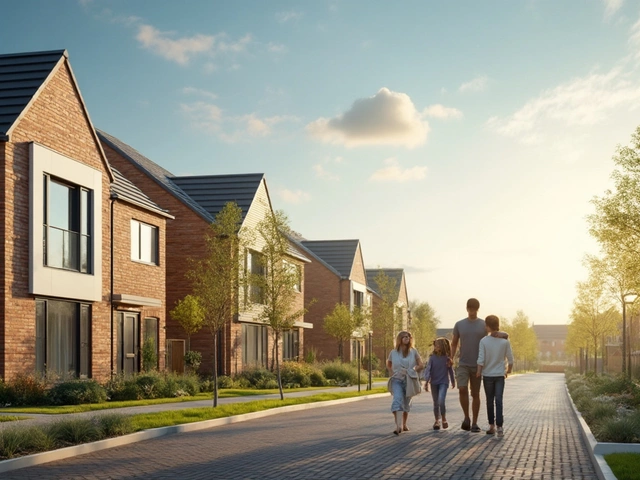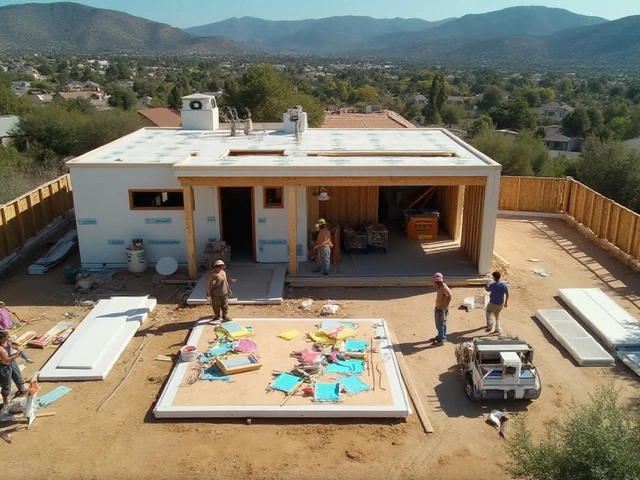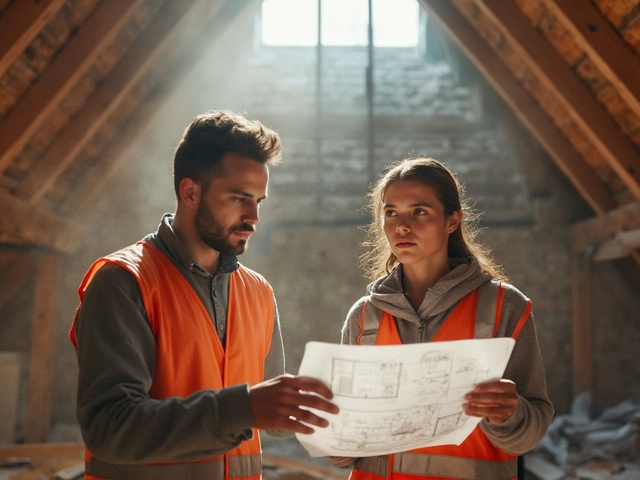If you wander by a new housing development right now, you'd probably see a lot of big wooden frames. Timber is everywhere, at least in countries like the UK, US, and Australia. Why? It's fast to work with, cuts labor costs, and there’s less waiting around for materials to dry or cure. Steel is showing up more, especially in apartment blocks, thanks to how strong and precise it is. But single-family homes? Wood still rules.
Bricks are still hanging on, especially for outer walls. They’re good for insulation and hold up well against the weather, but they’re slower and more expensive than timber frames—a reason you see them as cladding, rather than for the whole structural frame. Concrete blocks are another classic—used a lot for foundations and in places that get battered by storms. No surprise there, honestly.
Want a tip? If you're eyeing a new build, ask the builder what the main structure is made from. It changes how the house handles heat, noise, and even mold. Some folks pay more for all-brick or reinforced concrete because they want a rock-solid feeling—or plan to stay for decades.
- The Go-To Materials in Modern Home Construction
- Wood, Brick, Steel: What’s Popular and Why
- What Shapes Material Choice—Cost, Speed, and Location
- Trends: Eco-Friendly and Tech-Forward Materials
- What to Ask if You're Buying a New Build
The Go-To Materials in Modern Home Construction
It’s no secret that today’s new builds rely on just a handful of main materials to get the job done. Walk through most suburban sites and you’ll see the same stuff popping up over and over. Why? It’s all about balancing price, speed, strength, and local building codes.
First up—timber. Especially in North America, timber frames are the backbone of most modern houses. Timber is cheap compared to steel, easy to work with, and doesn’t need specialized equipment. These days, a lot of builders use engineered wood like LVL (laminated veneer lumber) or plywood, which is less likely to warp or split than old-school lumber.
Concrete hasn’t gone anywhere, either. You’ll see it poured as a slab for the house to sit on or used in foundations and basement walls. In places with tough weather or termites, some builders even use insulated concrete forms (ICFs) for entire walls—they slot together like giant Legos and are filled with concrete onsite.
Bricks and concrete blocks are the go-to for external walls in lots of places. Bricks are solid for insulation and look good, which is why you’ll often spot them as exterior cladding. Concrete blocks are quicker to lay and a bit cheaper, so they’re common for garages, garden walls, and sometimes even whole homes in the UK and Australia.
Steel comes in mostly for multi-story buildings and apartment complexes. It gives you tall, open spaces without needing bulky walls. Some builders are starting to use light-gauge steel for single houses too, especially in bushfire-prone areas in Australia or termite zones in the US.
- Top tip: Always check if a new build uses treated timber. Unprotected wood is like a buffet for termites and rot, and that’s a headache you don’t want later.
- If energy efficiency matters, ask about insulation. Builders can stuff cavity walls with mineral wool, foam, or even recycled denim.
The stuff your house is made of isn’t just about following rules. It shapes how warm, quiet, and sturdy it feels once you move in.
Wood, Brick, Steel: What’s Popular and Why
If you’re checking out modern new builds, three names pop up again and again: wood, brick, and steel. Each one dominates in certain types of builds and for good reasons. Let’s break down what’s driving the choices and where each material fits in.
New builds in a lot of neighborhoods go up fast because timber is easy to move and work with. In the US, about 90% of single-family homes use wood frames. Part of that is how quick it is—experienced crews can get a whole house skeleton up in days. Plus, wood is cheaper than brick or steel and keeps the job site flexible: if there’s a mistake, you can fix it without too much fuss.
Bricks are still popular, especially in places dealing with tough weather. They cost more and need more labor, but they last. Take the UK, for example: nearly 70% of new homes use bricks in the exterior walls. The funny part is, in lots of these houses, the structure is timber, and brick is just the outside layer. It keeps homes quieter, warmer, and looks solid—so people are willing to pay more for that traditional style, even if it’s not holding up the whole house.
Steel is taking over in taller apartment blocks or commercial builds. It’s strong, predictable, and handles earthquakes and heavy winds better than wood. If you see a new condo with lots of glass and wide-open floor plans, odds are there’s steel behind those walls. It costs more and sometimes takes longer because precision matters, but you end up with bigger, more flexible spaces.
- Wood: Quick, less expensive, easy to repair. Needs maintenance to avoid rot or termites.
- Brick: Durable, energy efficient, cuts outside noise. Takes longer to build and costs more up front.
- Steel: Super strong and stable, allows big open rooms. Higher price tag, and special skills needed for assembly.
Here’s a quick look at how these materials stack up side by side:
| Material | Speed of Build | Typical Cost | Best For |
|---|---|---|---|
| Wood | Fast | Low-Mid | Single-family homes, extensions |
| Brick | Medium | Mid-High | Weather resistance, soundproofing |
| Steel | Medium-Slow | High | Apartments, large spans, commercial builds |
Picking the right material isn’t just up to the builder. It also comes down to local building codes, what buyers want, and what’s available. If you want a budget-friendly, quick build—wood wins. For something long-lasting with a classic look—go brick. Going tall, modern, or open floor plan? Then steel’s likely holding things up.
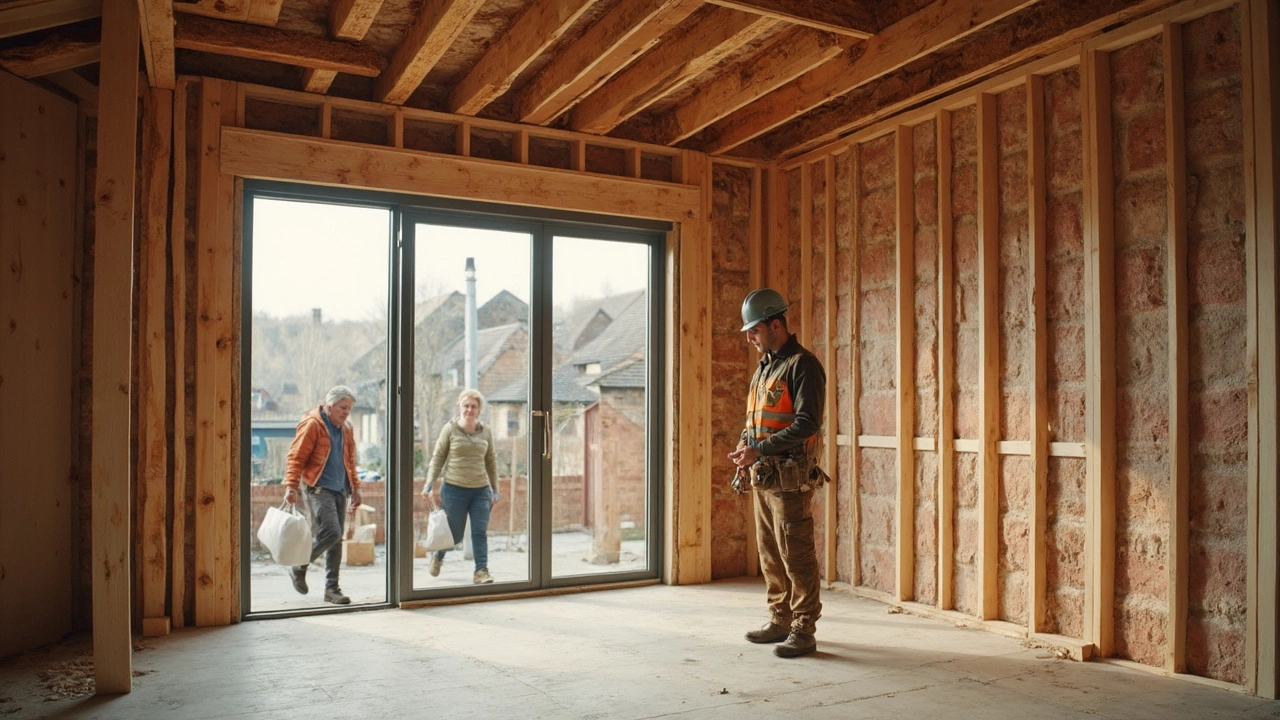
What Shapes Material Choice—Cost, Speed, and Location
Builders don’t just pick materials because they’re “nice”—most of the time, it comes down to three things: cost, how fast you can put them up, and where you’re building. These factors steer almost every part of the process.
First up: cost. Wood framing is usually cheaper than steel or concrete when you’re talking about a typical house. That’s why, across the U.S., over 90% of new single-family homes use wood for the structural frame. But if you’re building in a place with strict fire rules or termite problems, prices for treating or upgrading wood can push builders toward steel or concrete, even if it’s pricier up front.
Speed matters a lot too. Timber-framed homes can go from a muddy lot to a roof in just weeks, while all-brick or concrete builds can take months. That’s a huge difference for developers trying to sell fast. Some building crews even assemble walls offsite and just plug them in when they show up—a trick that can cut months off construction time.
Location? Don’t ignore it. Coastal areas use more concrete and steel because of hurricanes and salty air. Up north, insulation is king, so you’ll see thicker wall panels or extra layers inside the frame. Local building codes might also ban certain types of wood, especially in bushfire-prone zones in Australia or wildfire regions in California.
Here’s a quick rundown of popular materials for new builds and where they’re winning or losing:
| Material | Average Cost per Square Foot (US) | Main Advantages | Main Drawbacks |
|---|---|---|---|
| Wood | $100-$200 | Affordable, fast, easy to work with | Vulnerable to pests, fire risks |
| Brick | $150-$300 | Durable, great insulation, fire resistant | Expensive, slow to build |
| Concrete | $120-$250 | Strong, weather-proof, pest-proof | Heavy, longer build time, more costly labor |
| Steel | $200-$350 | Precise, strong, low maintenance | Costly, thermal bridging (can leak heat/cold) |
Tip: Always check what local builders normally use and why. Sometimes the best deal isn’t the cheapest on day one, but what saves you headaches—and cash—over the years.
Trends: Eco-Friendly and Tech-Forward Materials
It’s not just about looks or tradition anymore—modern buyers want new builds that save energy, last longer, and maybe even help the planet. Builders are catching on, mixing eco-friendly stuff with tech that makes homes smarter and easier to run. This isn’t just marketing talk. New-builds in 2025 are showing serious changes in what gets used and why.
Solar panels are almost a given on higher-end new builds, especially since government grants and cheaper tech made it way more affordable. Some neighborhoods have entire rooftops covered. You’ve also got heat pumps replacing old-school gas boilers, with new builds in places like the UK and Germany setting the pace. Modular construction is rising—think giant building blocks made from recycled materials, put together super fast, cutting a ton of waste.
Some builders are swapping out traditional insulation for recycled denim or sheep’s wool. Believe it or not, it works. You’ll see even big developments pushing for triple-glazed windows, which make a real difference on energy bills. And smart home tech? Even entry-level homes often come wired for it—smart thermostats, lighting, and security, ready to run from your phone.
- If you’re shopping, ask about materials like bamboo flooring or reclaimed wood—they’re tough, look fresh, and don’t wreck forests.
- Check for labels like “BREEAM” or “LEED”—these show a new build hits proper green standards.
- Don’t be shy about asking for a home energy rating. It affects how much you’ll pay to heat or cool your place for years.
Here’s a quick look at just how much new-home building is going green right now:
| Eco Material/Tech | % of New Builds Using It (2024) |
|---|---|
| Solar Panels | 61% |
| Heat Pumps | 49% |
| Recycled Insulation | 28% |
| Smart Thermostats | 38% |
This eco and tech shift isn’t slowing down. If anything, new builds will only get more advanced. When you’re looking for a new build, ask the sales rep about these trends. You don’t just want a house that looks good now—you’ll want it to last, hold its value, and save you money in the long run.
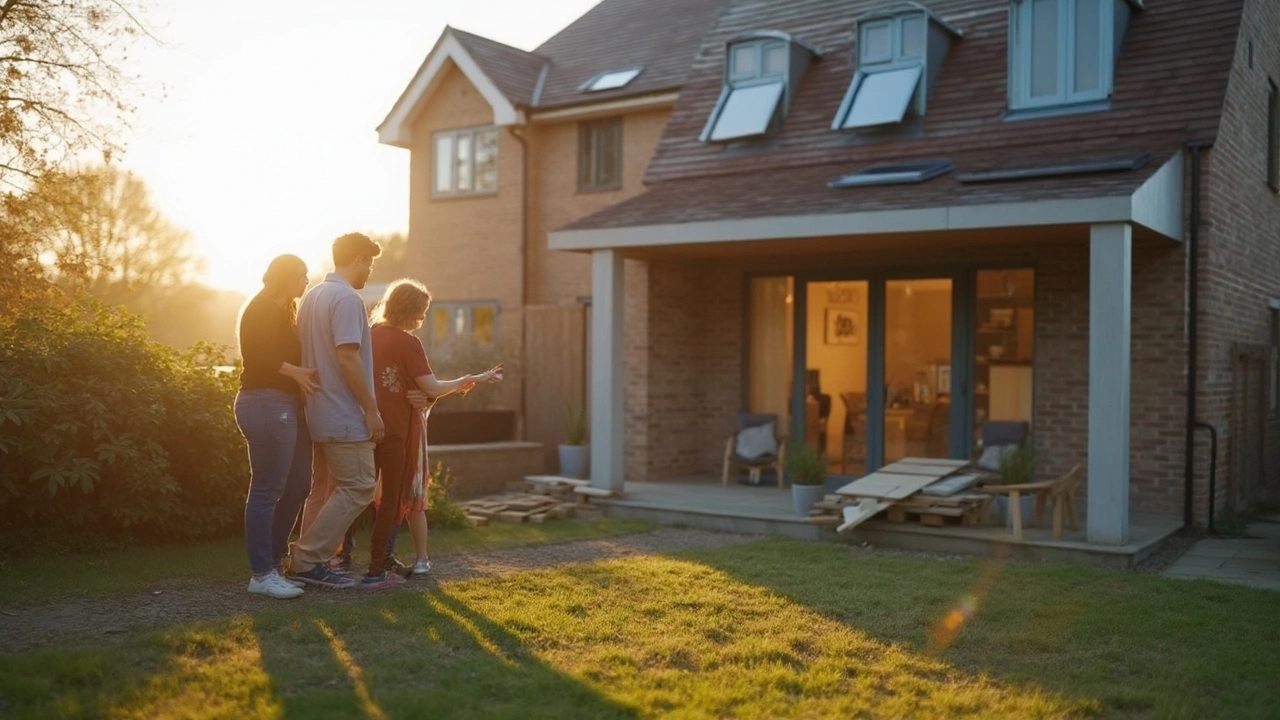
What to Ask if You're Buying a New Build
Thinking of buying a new build? There’s more to it than picking kitchen tiles. If you care about what your home is made of—how sturdy, warm, or quiet it feels—it's smart to ask the right questions up front.
- New builds usually use timber, concrete, or steel for their main frame. Some areas use brickwork on the outside or as a full structural wall. Don’t just trust the brochure—ask if the frame is timber, steel, or concrete. Timber is the most common for regular houses, but concrete is often used for flats and places where noise reduction matters.
- Check what insulation materials are used in the walls and roof. Good insulation means lower bills and a comfortable home, especially in winter or on noisy streets.
- Ask about warranty and certificates. Most UK new builds come with a 10-year NHBC warranty for structure, but not all builders use NHBC. Make sure you get clear answers about structural cover and exactly what’s included.
- If you’re after low maintenance, ask if the exterior is real brick, brick slips, or just a timber frame with fancy panels. Fake brick can look nice but might not weather as well or last as long.
- Ask for the building energy rating. Most new builds are more efficient than older homes, but some details—like triple glazing or high-quality doors—can make a real difference in running costs.
- Don’t forget about acoustics. If you share a wall or floor with someone else, ask what soundproofing is built in. Thin walls between flats can make a place feel less private.
- Bigger sites often mean faster builds, and sometimes things get rushed. Ask how long the construction took and if there’s a snagging process after you move in to fix small faults.
There’s no harm in asking for a tour of homes at different build stages. You’ll get a clearer look at what’s behind the walls and what sets one builder apart from another. The more you know now, the fewer surprises you get after moving in.

